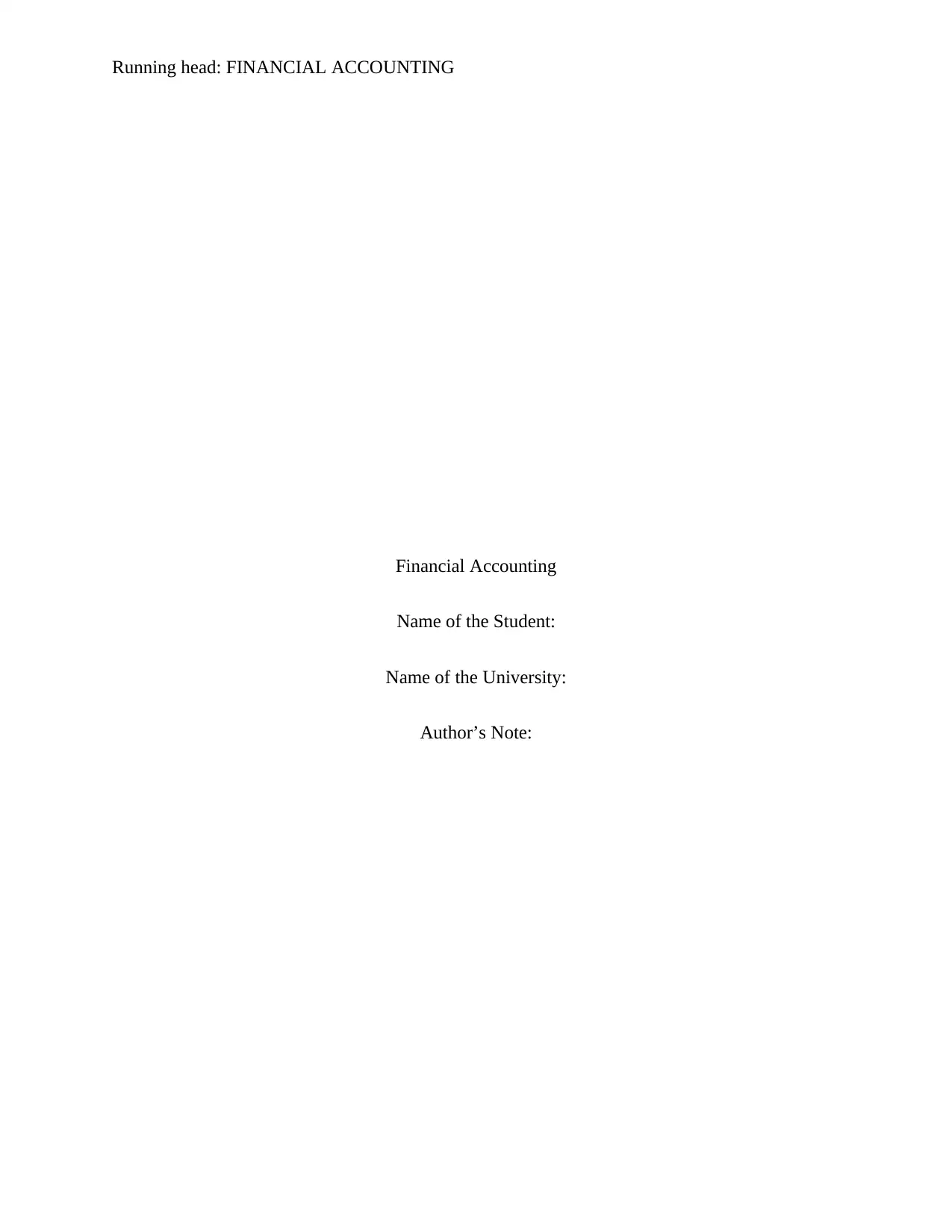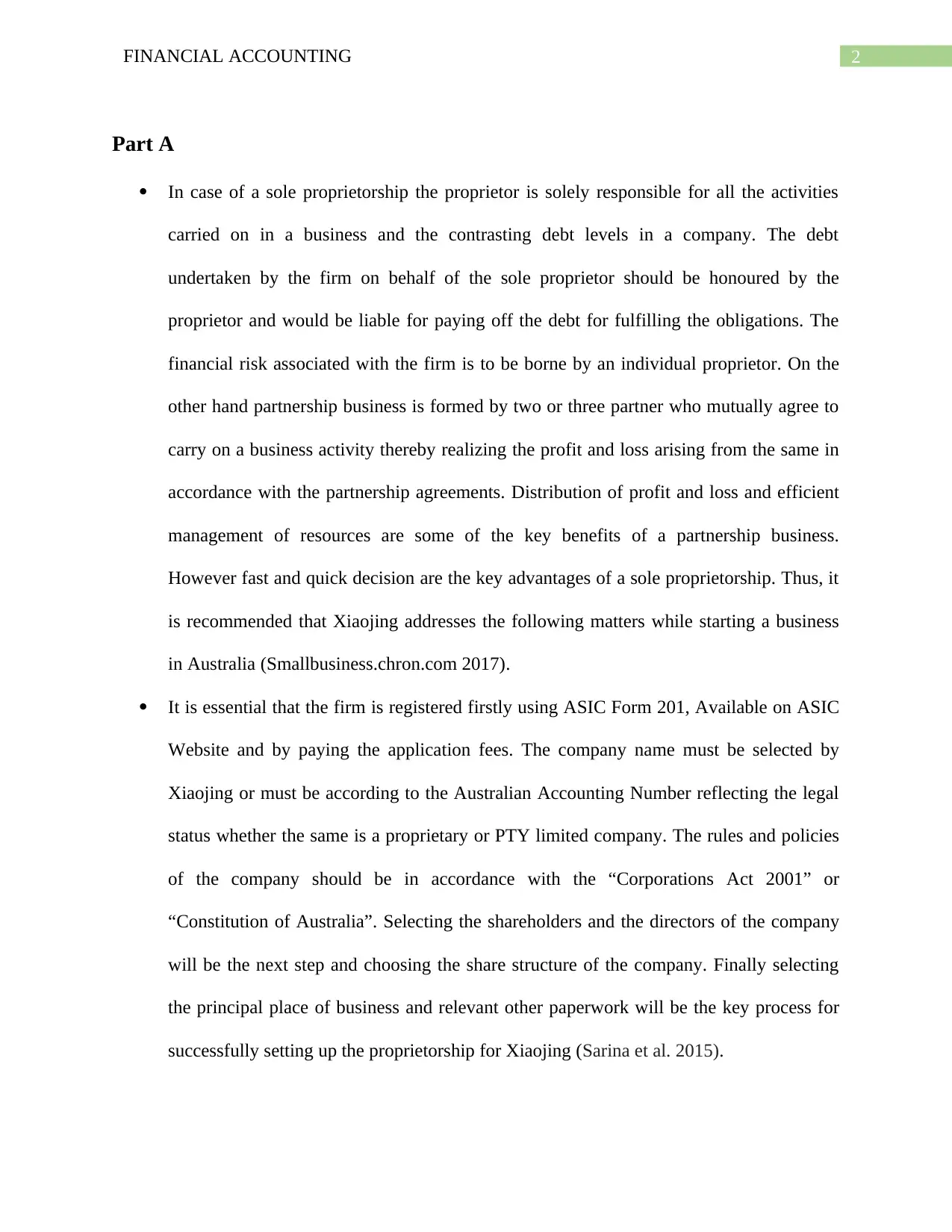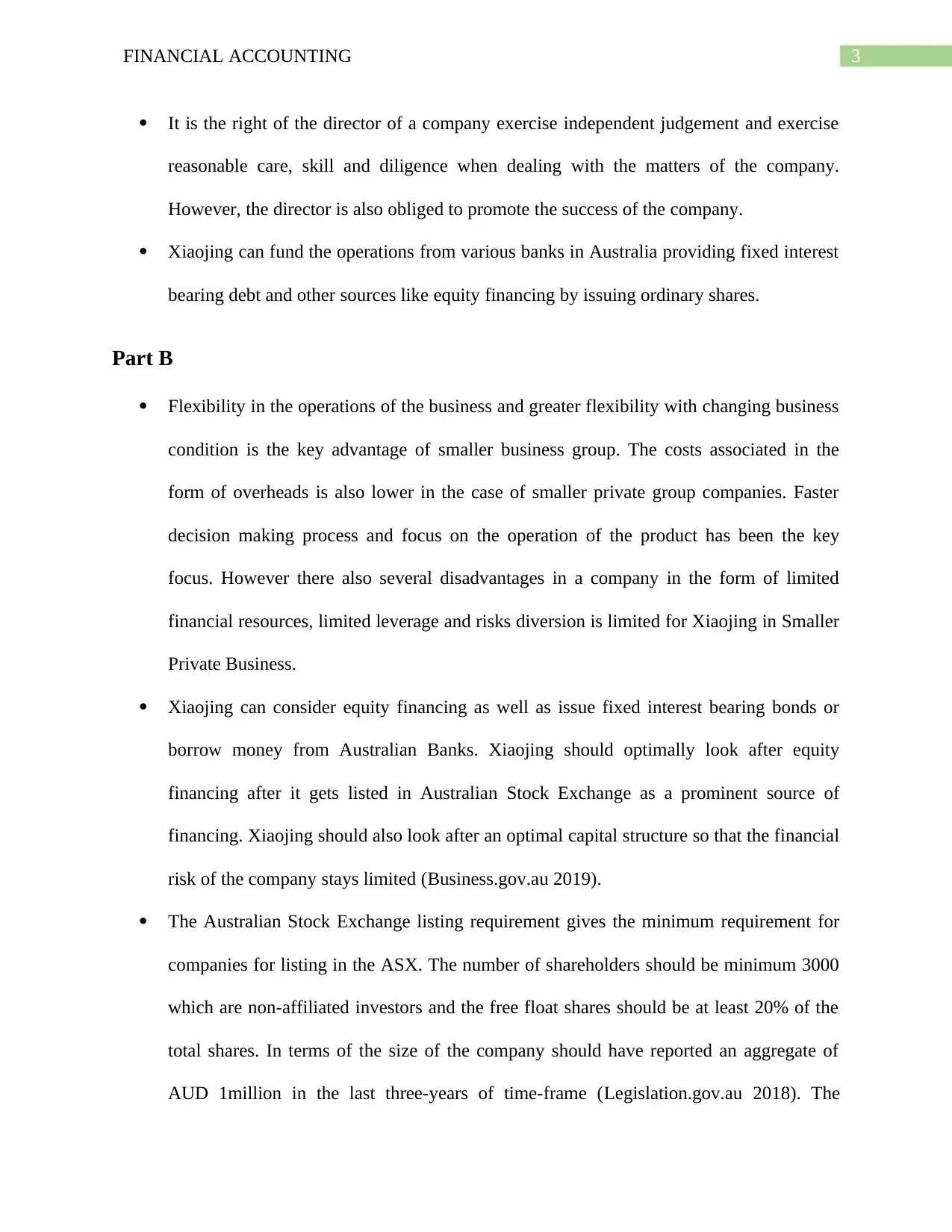ACCT6003 Financial Accounting Report: Xiaojing's Business in Australia
VerifiedAdded on 2023/04/10
|6
|737
|172
Report
AI Summary
This report provides a comprehensive analysis of financial accounting principles within the context of a business setup in Australia. It begins by examining the differences between sole proprietorships and partnerships, highlighting the advantages and disadvantages of each structure. The report then delves into the process of forming a company in Australia, including registration, selecting a company name, adhering to the Corporations Act 2001, choosing shareholders and directors, and selecting the principal place of business. The role and responsibilities of company directors are also discussed. Furthermore, the report explores funding options for businesses, including fixed-interest debt and equity financing. It emphasizes the advantages of smaller private business groups, such as operational flexibility and cost-effectiveness. The report also addresses potential disadvantages, like limited financial resources. The report concludes by discussing the Australian Stock Exchange (ASX) listing requirements, including minimum shareholder numbers, free float shares, and financial size criteria.
1 out of 6













![[object Object]](/_next/static/media/star-bottom.7253800d.svg)